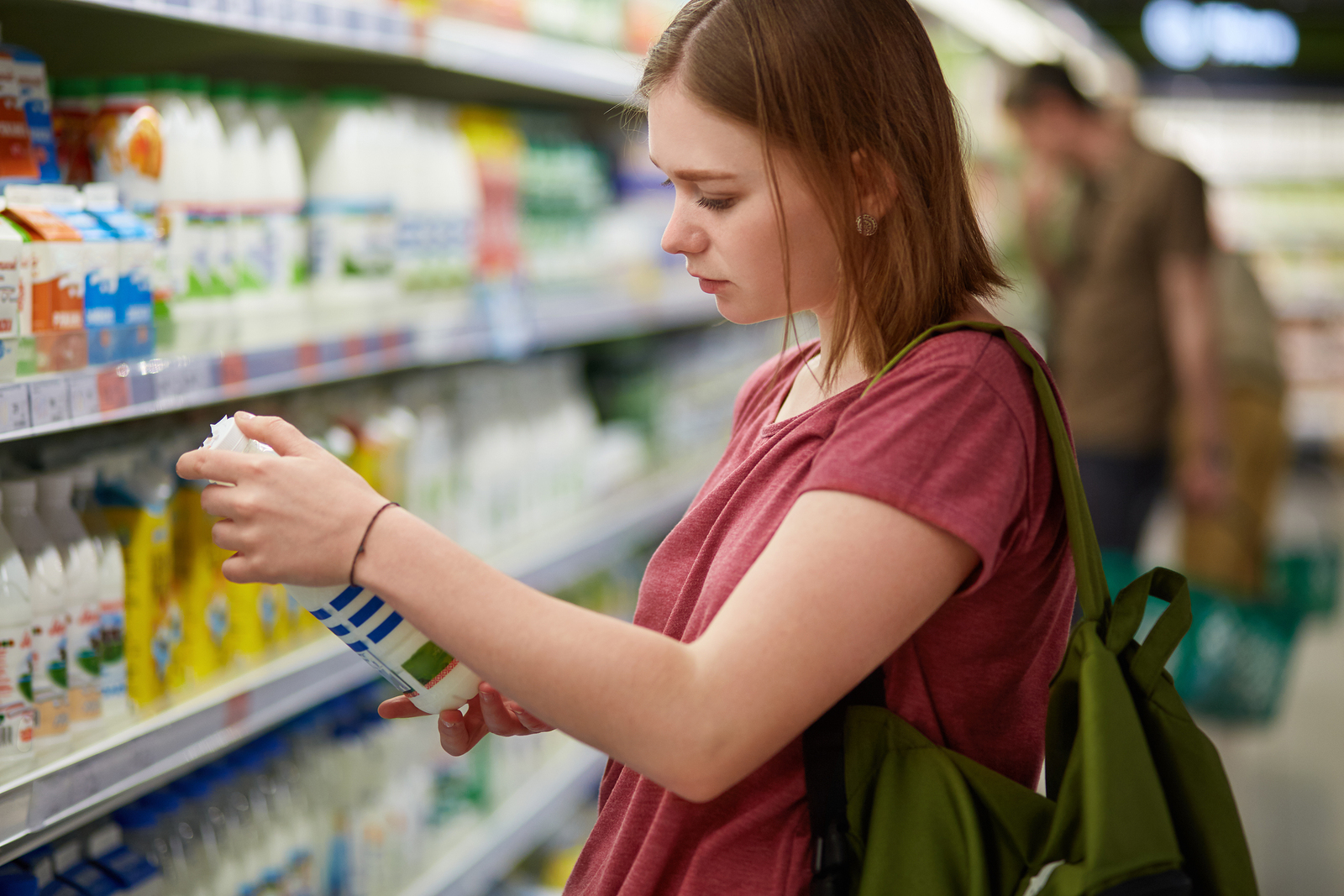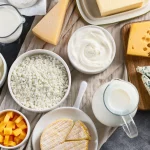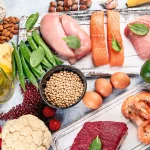
Key facts
- In Australia, by law, all manufactured foods have a label that show safety and nutrition information.
- Food labels help you make informed decisions about the food you buy and eat.
- The nutrition information panel tells you the size of a standard serving of the product and which nutrients are in that serving.
- The Health Star Rating is a guide to help you make healthier choices.
- For a healthy balanced diet, you need to eat protein rich foods like lean meat, poultry and dairy products, fresh fruit and vegetables — these foods usually don’t have a food label, a nutrition panel or a Health Star Rating.
What information is on the food label?
The label on a packaged food will tell you:
- the name and brand of the product
- what ingredients it contains (listed in order from largest to smallest by weight) — this includes a list of food additives and information for people with food allergies
- nutrition information (such as average amount of energy, fat, protein, sugars and salt)
- percentage labelling (how much of the main ingredients it contains, so you can compare it to other products)
- use-by or best-before date and directions for use and storage
- details of the manufacturer and the country where the food was produced
- how much it weighs
In Australia, all manufactured foods have to have labels containing safety and nutrition information by law. This information helps you to make decisions about the food you buy and eat so you can follow a healthy diet.
Understanding nutrition claims
Most labels tell you what percentage of the main ingredients are in packaged foods. If there is an ingredient that is known to cause allergies, it must be written no matter how much is used. This helps you to compare similar products easily and work out how the food fits into a balanced diet. Read more about recommended daily intakes for adults and recommended daily intakes for children.
The label may make a number of nutrition claims such as ‘gluten free’, ‘low GI’, ‘low fat’, ‘reduced salt’ or ‘high fibre’. These mean the product meets strict criteria set by the government. Even if a product makes a nutrition claim, this doesn’t mean that it is healthy. For example, a product that is ‘low fat’ may have more kilojoules (energy) than another similar product. Check the nutrition information panel to see how the product compares.
How to read the nutrition information panel
The nutrition information panel tells you the size of a standard serving of the product, and which nutrients are included in that serving. You can use the label to compare the product with what’s in similar packaged foods.
Look out for information about:

- Energy: A kilojoule is a measure of energy. To lose weight, you need to eat and drink fewer kilojoules (kJ) than you use. You should limit your intake of discretionary or junk foods — for example, those that have more than 600kJ per serve.
- Protein: Protein is found in meat, poultry, dairy, fish, eggs, beans, soy, nuts and seeds. Protein is important for growth and has the same amount of kilojoules as carbohydrates.
- Fat (total): Fat is higher in kilojoules than other nutrients, so you should limit the total amount you eat.
- Saturated fat: There are different types of fats. Saturated fats are linked to a higher risk of heart disease and high blood cholesterol, so it is especially important to choose foods low in saturated fat.
- Carbohydrate (total): Carbohydrates are found in all fruit and vegetables, all breads and grain products, and sugar and sugary foods. You need carbohydrates for energy.
- Sugar: Sugar is a type of carbohydrate. It is better to choose healthier carbohydrates and to limit foods that are high in added sugars.
- Healthy carbohydrates: Healthier carbohydrates are those that are not process, or minimally processed such as whole grains, lentils and beans. As well as carbohydrates, these foods also give you fibre, vitamins and minerals.
- Fibre: High fibre foods such as wholegrain bread and cereals improve digestion and help you to feel full.
- Sodium: This tells you how much salt the product contains. Eating too much salt is linked to high blood pressure and can lead to heart disease, stroke and kidney disease.
Comparing products
To compare similar products, it is best to look in the column on the nutrition information panel that shows the quantity of a nutrient per 100g or per 100ml so you know you are comparing the same thing.
For most people, healthier options include products that have lower levels of saturated fat, sugar and sodium (salt) per 100g, and higher levels of fibre.
It’s a good idea to look at the food as a whole rather than just one nutrient, when comparing products.
Health Star Rating (HSR) system
The Health Star Rating on the front of the pack is designed to help you choose healthier packaged foods quickly.

Packaged foods are rated at between ½ and 5 stars. The rating is calculated according to ingredients that increase the risk of obesity and are linked to other chronic diseases, such as diabetes or heart disease. The more stars, the healthier the product.
The health stars are designed to help you compare similar packaged products. For example, they might help you choose the healthiest breakfast cereal, but not to compare breakfast cereal with yoghurt.
Remember, the Health Star Rating is a guide to help you make healthier choices of packaged foods. For a healthy balanced diet, you need to eat protein rich foods like lean meat, poultry and dairy products, and a lot of fresh fruit and vegetables, which usually don’t have a Health Star Rating.



